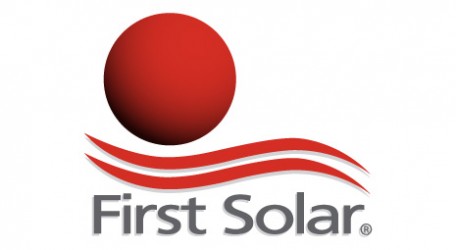Information Review of First Solar
First Solar, Inc. (NASDAQ: FSLR), based in Tempe, Arizona, is a pioneer in the development and commercialization of thin-film solar photovoltaic (PV) cells and modules that use cadmium-telluride (CdTe) as the semiconductor. Established in 1999, the company launched its commercial production in 2002 and quickly became a global thin-film PV market leader. The company’s success is a testament to its ability to both design and develop high-efficiency, thin-film PV modules, and manufacture them on a low cost-per-watt basis, using a highly-efficient integrated, automated and continuous process.
In addition to manufacturing thin-film solar PV modules, First Solar develops, owns and manages residential, commercial and utility-scale solar PV projects and programs. It markets, sells and services its products and services in collaboration with some 6,000 associated companies in North America, Western Europe, Asia and Australia.
Business Strategy & Performance:
First Solar has long been a favorite of stock market investors. Its shares, listed on Nasdaq, rose from an IPO price of $30 in 2006 to breach the $300 mark in 2008. The subsequent near-collapse of the banking system, global recession, a sharp drop in the price of solar PV modules, and changing government policies have made for more difficult business conditions since then. With a market capitalization exceeding $8 billion as of mid-2011, First Solar’s shares were trading between $87.29 and $175.45 at the date of this post in 2011.
Net sales exceeded $2.5 billion in 2010, up from 2.07 billion in 2009, while net income rose to $664 million ($7.68 per diluted share) from $640 million ($7.53 per diluted share). Operating income for 2010 came in at $705 million, as compared to $675 million in 2009, while free cash flow for 2010 totaled $143 million, as compared to $395 million in 2009.
First Solar is expanding its business internationally, both organically and via acquisition. Its thin-film factories in Arizona, Ohio, Germany, Malaysia and Vietnam had, as of mid-2011, a total production capacity of 2,236 megawatts (MW); management expects to increase this to 2,732 MW in 2012.
Key Markets:
Given the existence of feed-in tariffs in EU countries and a generally more supportive business climate for renewable energy business development, Western Europe has been a key market for First Solar, particularly in the company’s early years. More recently, its business has grown significantly in North America, and management is working to expand in China, India, Australia, the Middle East, and other regions in Europe.
First Solar’s utility-scale pipeline and construction totaled 2.6 gigawatts (GW) as of mid-2011, 0.5GW of which had nearly been completed. In the USA, these include the 290MW Agua Caliente project with Pacific Gas & Electric and NRG in Arizona, and the 150MW Copper Mountain 2 project with PG&E and Sempra in Nevada. Currently in development is more than 1,650MW of solar PV installations, including the Topaz, Sunlight and Stateline projects in California, and the 250MW Silver State South project in Nevada.
Sustainability Targets:
Management is focused on achieving its 2014 sustainability targets: Mass producing thin-film CdTe PV cells with an energy conversion efficiency of 13.5-14.5%, and driving the cost-per-watt of its thin-film modules down by 16-30% to $0.52-$0.63. In 2Q of 2011, one of its thin-film solar PV cells set a world record at the US Department of Energy’s National Renewable Energy Lab (NREL) by converting 17.3% of incident sunlight into electricity.
Having broken the $1/Watt module-manufacturing cost barrier in 2008, First Solar’s average cost-per-watt for manufacturing thin-film CdTe modules continues to decline. Module manufacturing costs dropped to $0.75 as of mid-2011, which is more than 1/3 less than the cost of “best-of-breed” crystalline silicon solar PV modules, according to industry researchers. Working to achieve an overall “balance of systems” cost of $0.98/W by 2014, First Solar came in at $0.99/W in 2Q of 2011.
First Solar management is also committed to minimizing the environmental impact of its business. The company can boast one of the most (if not the most) efficient thin-film solar PV manufacturing processes in the industry. At 16 grams of CO2 equivalent per kilowatt-hour, its carbon footprint is a fraction of coal’s 900, oil’s 850, and natural gas’ 400. It’s also significantly less than the 28 gCO2/kWh footprint of crystalline silicon PV. First Solar was also the first solar PV company to establish and run its own PV module recycling program, collecting used modules from owners and transporting them to its facilities for recycling.
Looking Ahead:
Industry analysts forecast that the solar PV market will grow at a constant annual rate of 12% between 2010 and 2013, with demand for solar PV modules exceeding 20 GW in 2012. Continuing declines in the average selling price for solar PV modules is forecast, as expanding capacity and growing demand will result in higher sales volumes and further the industry-wide goal of grid parity. Industry-wide, the average selling price is forecast to drop from just under $1.50 to less than $1.25 by 2012.
First Solar management believes that growth in demand for solar PV, coupled with its ability to simultaneously deliver Cd-Te solar PV cells and modules with higher conversion efficiencies at lower costs, will continue to enable the company to achieve superior results, even as subsidies are reduced and competition increases.



Comments are closed here.